The HTC One Review
by Brian Klug on April 5, 2013 8:50 PM EST- Posted in
- Smartphones
- HTC
- Android
- Mobile
- HTC One
- Snapdragon 600
Snapdragon 600 - GPU Performance
On the GPU side of Snapdragon 600 we're still looking at Adreno 320, which is easily Qualcomm's first highly competitive GPU. At its launch, Qualcomm claimed the Adreno 320 clocks in Snapdragon 600 could be higher than what we saw in S4 Pro/APQ8064. To find out, we turned to our trusty GLBenchmark suite.
The good news is that none of the thermal throttling we saw on the APQ8064 based Nexus 4 was present on the HTC One. Curiously enough, the thermald.conf file is now stored as a binary file - which means we can't get direct access to it. Either way, although the One can get warm during heavy CPU/GPU workloads, it doesn't throttle while running GLBenchmark which meant our freezer can remain on food cooling duties for this review.
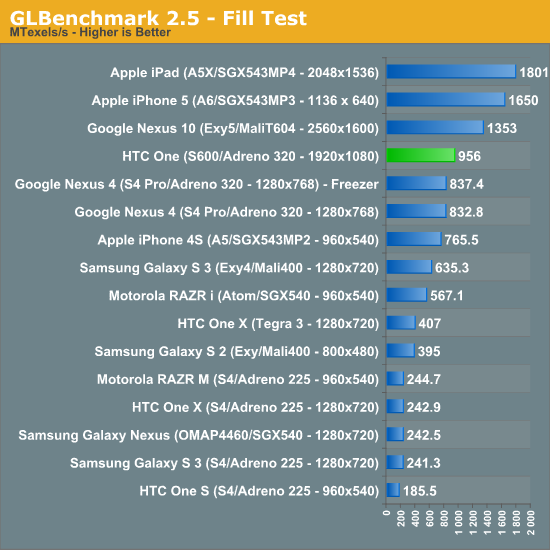
Here we see a small increase in fill rate compared to the Nexus 4, roughly 14%.
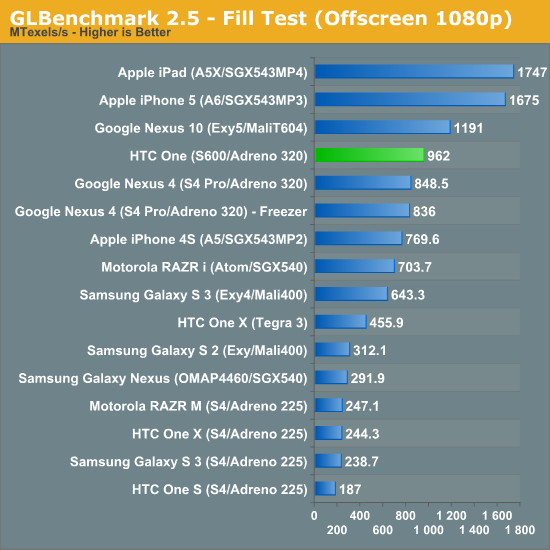
The beauty of being on a 1080p display is that GLBench's on and offscreen tests produce roughly similar results as they are both run at 1080p. The offscreen results do have vsync disabled though.
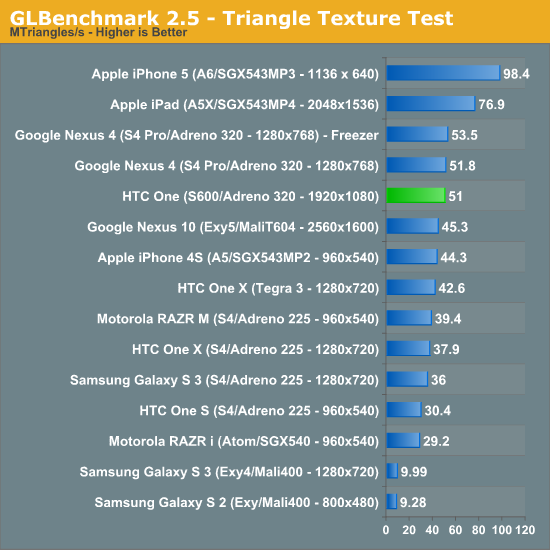
Very similar triangle throughput to the Nexus 4, and a bit lower than the Nexus 4 freezer test, which implies that Qualcomm is doing a better job of keeping GPU clocks under control in Snapdragon 600.
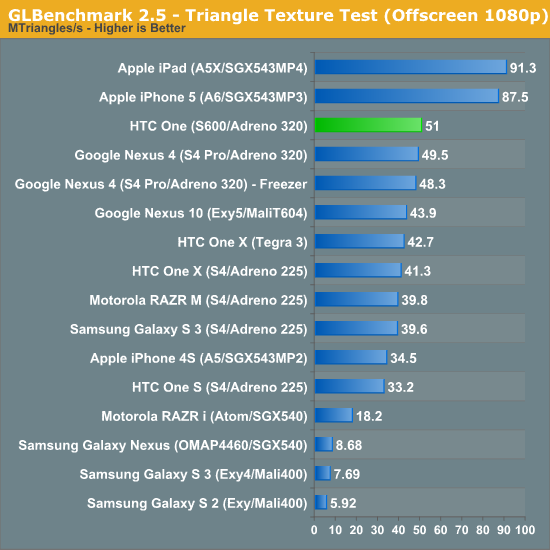
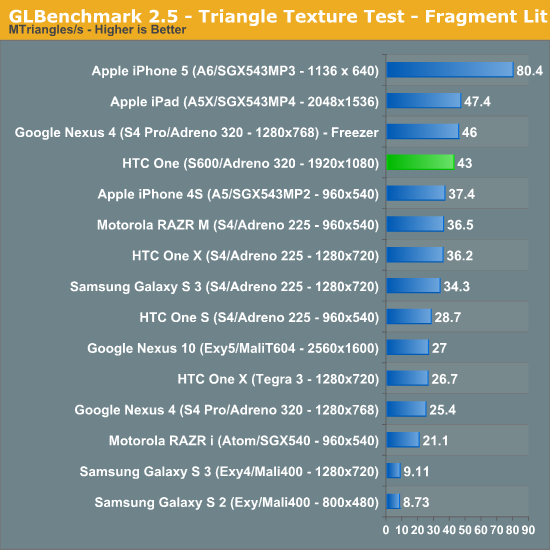
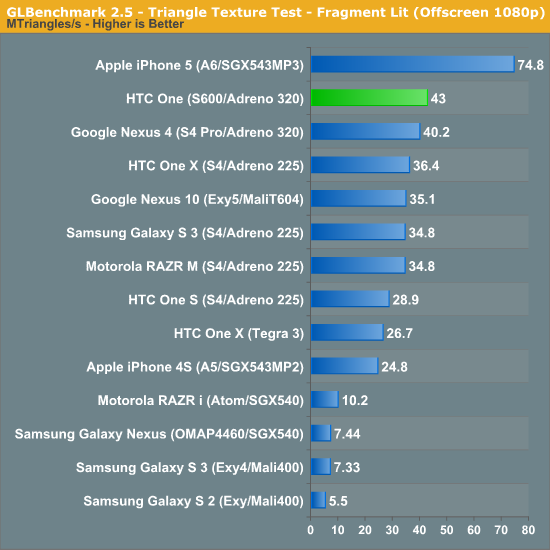
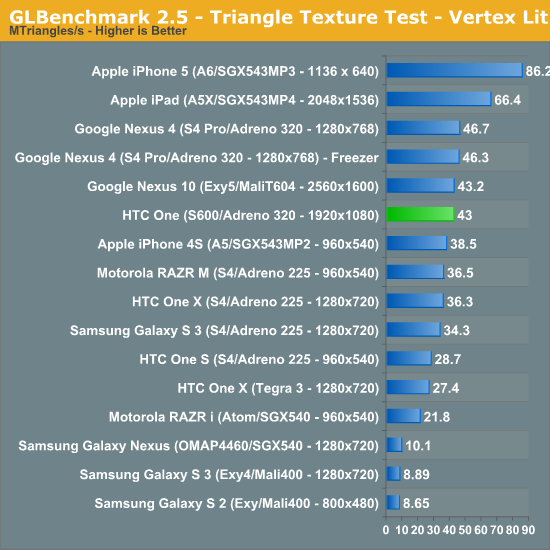
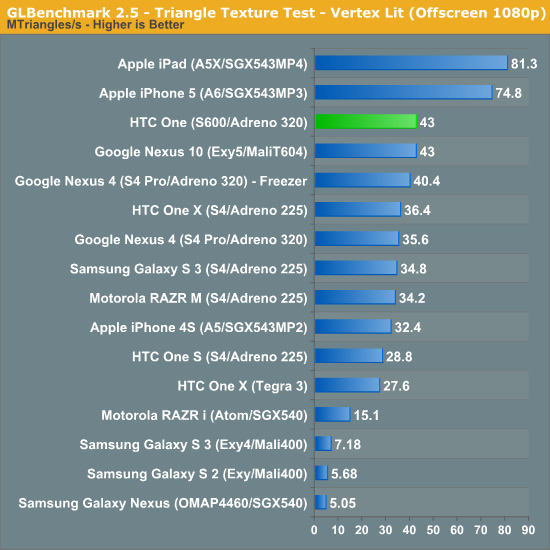
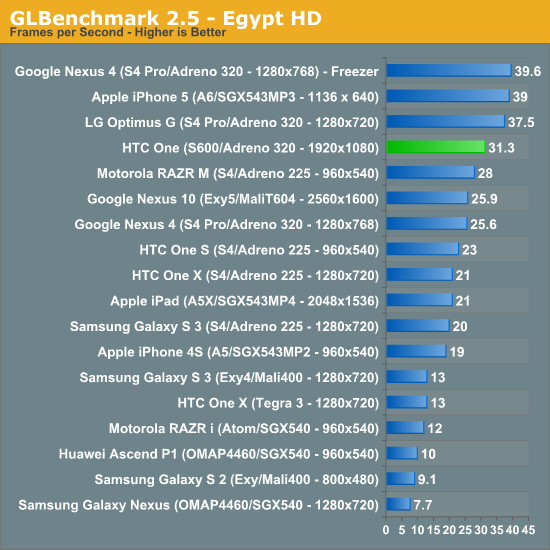
The "game" benchmarks in GLBench give us a good indication of overall performance. The offscreen results are most interesting from drawing comparative conclusions:
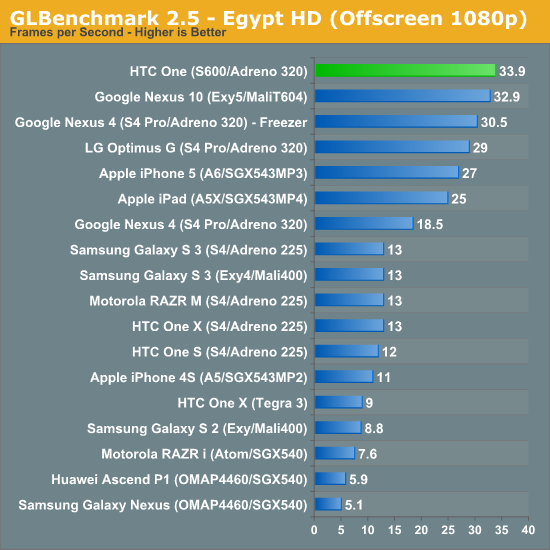
The One is fast - it's now the fastest smartphone we've ever tested in the Egypt HD offscreen test. The margin over the Nexus 4 however makes me believe that we're talking about very small increases in GPU frequency at best (either that or better thermal management).
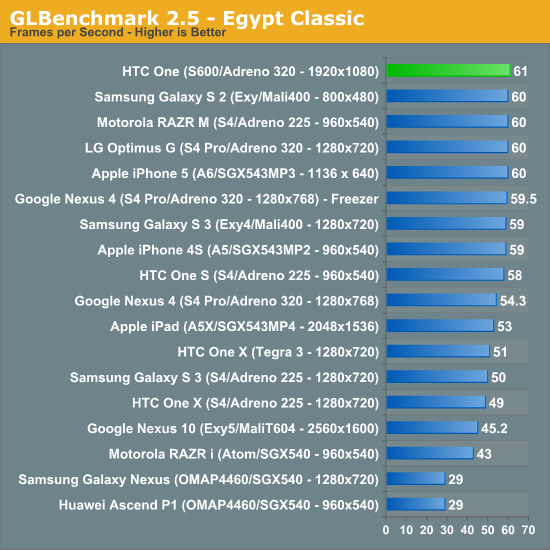
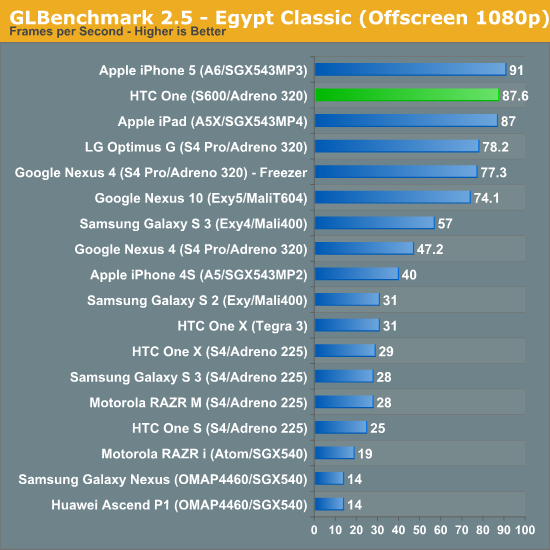
The Egypt Classic results are equally impressive. Here we're seeing about a 12% increase in performance compared to the APQ8064 based Optimus G, so at best we may be talking about a 15% increase in frequencies - or again, just better thermal management (or a combination of the two). Given the fact that process node hasn't changed at all, I think a small clock speed boost wouldn't be unreasonable to expect from the 600's Adreno 320. It's very clear that thermal management has improved though.








